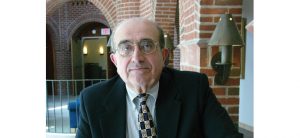ADR, Meet EDR: An Emerging New Model for Resolving Medical Malpractice Claims
Finding more effective ways to address and resolve medical malpractice claims has dogged the legal and medical community for decades.
April 24, 2018 at 11:33 AM
6 minute read

Finding more effective ways to address and resolve medical malpractice claims has dogged the legal and medical communities for decades. The very nature of the relationship between patient and provider, the difficulty in determining the appropriate standard of care and the existence of mandated reporting requirements of certain claims to a national databank are but a few of the issues that make malpractice disputes so difficult. Creating a threshold high enough to discourage frivolous claims but realistic enough to allow worthy claims to continue has been a challenge in the eyes of advocates for both sides.
Representatives of patients and caregivers—whether institutions or individuals—argue with equal conviction that the process should focus on important objectives, beyond bringing resolution to specific claims.
For instance, patient advocates demand that regardless of how a claim is handled, the process should promote safety for patients in the future, considering the statistics that identify hundreds of thousands of adverse medical events each year. Provider advocates argue that existing processes for resolving medical claims result in the creation of huge obstacles for the future practice of medicine, not the least of which involves skyrocketing insurance premiums causing many physicians to leave the practice.
Efforts are frequently made to change existing processes, and it is not unusual to hear cries of a “crisis” in the medical malpractice dispute resolution system. A number of remedies are often proposed. Connecticut has seen, and, in fact, legislatively implemented, a number of them, including the requirement of a certificate of good faith based on the written opinion of a similar health care provider; the inadmissibility of an apology; and mandatory referral to mediation.
In a presentation hosted by the Quinnipiac-Yale Dispute Resolution Workshop at Quinnipiac University, UNLV law professor Lydia Nussbaum gave an impressive review of the history of efforts to improve medical malpractice dispute resolution processes and identified emerging new efforts, particularly the Oregon Patient Safety Commission (OSPC) and its Early Discussion and Resolution (EDR) Program. Nussbaum drew from her panoramic article, “Trial and Error: Legislating ADR for Medical Malpractice Reform,” published in the Maryland Law Review, which examined past “generations” of efforts to deal with a tort-based dispute resolution system, including medical screening panels, binding arbitration and mandatory mediation. Nussbaum analyzed legislative efforts in those three areas, along with policy rationales and supporting data.
Nussbaum concludes that “the adversarial nature of lawsuits further drives a wedge between patients and providers and frustrates opportunities for candor and cooperation. The general lack of communication between providers and patients following an unanticipated, adverse outcome of medical treatment creates stress and confusion for the people directly involved, undermines the delivery of quality care, and leads to additional healthcare costs for patients, their families, and society as a whole.”
She reports that past legislative efforts have not made it easier for injured patients to access the system; nor have they significantly altered provider behavior deemed responsible for adverse events. Indeed, she finds the medical liability system to have “profound shortcomings.”
Nussbaum identifies critical elements of a workable process, including early disclosure, better communication and more transparency, which are elements of Oregon's EDR system, and provides an alternative to the current tort system.
How EDR Works
The EDR program begins with either the patient or health care professional requesting a “conversation” through the Oregon Patient Safety Commission. Both parties must agree for the conversation to take place. The process has a number of unique elements. First, the legislation creating the process specifically prohibits identifying the conversations as malpractice claims, so reporting requirements are not activated.
Second, except for any offers of payment, all communications must be oral. Third, the conversations are confidential and may not be considered an admission of liability or used in subsequent proceedings. If a conversation does not result in a resolution, mediation is available as a next step and the parties do not relinquish their right to a subsequent court proceeding.
The underlying policy objectives are increasing access to information and compensation and improving patient safety. Like previous legislative models, it also seeks to reduce costs involved in such claims.
The program is still in its relative infancy and only some 100 requests for conversation were received in its first three years of operation; the vast majority coming from patients. Since data about resolution of the disputes comes from resolution reports filed by the parties, hard-and-fast judgments are difficult to make. One very interesting side note from the Patient Safety Commission's December 2017 report was the discrepancy between provider and patient perceptions. As one example, far more providers perceived that an apology was given than did patients.
The Oregon commission has drawn a number of conclusions from its program to date. But the most important one seems to be that prompt communication with patients and their families following an adverse medical incident and the availability of a “confidential space” for discussion is of paramount importance toward achieving a successful resolution.
Nussbaum realistically identifies uncertainties and issues about the program which still need to be addressed. Among these are the needs to 1. incentivize providers to seek out the voluntary process (since they make up only a small percentage of the requests for conversations to date); 2. ensure patients have adequate access to legal advice during the informal process; and 3. evaluate whether obviating mandatory reporting to a national database is sound public policy providing adequate protection to others who might fall in harm's way.
While still in its very early phases, the Oregon program seems to hold promise. It will be interesting to see if EDR gains traction in other jurisdictions and if it might be considered here in Connecticut.
Harry N. Mazadoorian is a commercial arbitrator, mediator and member of the American Arbitration Association's Master Mediator Panel. He is the distinguished senior fellow at the Center for Dispute Resolution at Quinnipiac University School of Law.
This content has been archived. It is available through our partners, LexisNexis® and Bloomberg Law.
To view this content, please continue to their sites.
Not a Lexis Subscriber?
Subscribe Now
Not a Bloomberg Law Subscriber?
Subscribe Now
NOT FOR REPRINT
© 2025 ALM Global, LLC, All Rights Reserved. Request academic re-use from www.copyright.com. All other uses, submit a request to [email protected]. For more information visit Asset & Logo Licensing.
You Might Like
View All


George Carlin-AI 'Deepfake' Lawsuit Could Set New Standards for Celebrities' Rights of Publicity, Industry Veteran Says
Trending Stories
- 1How ‘Bilateral Tapping’ Can Help with Stress and Anxiety
- 2How Law Firms Can Make Business Services a Performance Champion
- 3'Digital Mindset': Hogan Lovells' New Global Managing Partner for Digitalization
- 4Silk Road Founder Ross Ulbricht Has New York Sentence Pardoned by Trump
- 5Settlement Allows Spouses of U.S. Citizens to Reopen Removal Proceedings
Who Got The Work
J. Brugh Lower of Gibbons has entered an appearance for industrial equipment supplier Devco Corporation in a pending trademark infringement lawsuit. The suit, accusing the defendant of selling knock-off Graco products, was filed Dec. 18 in New Jersey District Court by Rivkin Radler on behalf of Graco Inc. and Graco Minnesota. The case, assigned to U.S. District Judge Zahid N. Quraishi, is 3:24-cv-11294, Graco Inc. et al v. Devco Corporation.
Who Got The Work
Rebecca Maller-Stein and Kent A. Yalowitz of Arnold & Porter Kaye Scholer have entered their appearances for Hanaco Venture Capital and its executives, Lior Prosor and David Frankel, in a pending securities lawsuit. The action, filed on Dec. 24 in New York Southern District Court by Zell, Aron & Co. on behalf of Goldeneye Advisors, accuses the defendants of negligently and fraudulently managing the plaintiff's $1 million investment. The case, assigned to U.S. District Judge Vernon S. Broderick, is 1:24-cv-09918, Goldeneye Advisors, LLC v. Hanaco Venture Capital, Ltd. et al.
Who Got The Work
Attorneys from A&O Shearman has stepped in as defense counsel for Toronto-Dominion Bank and other defendants in a pending securities class action. The suit, filed Dec. 11 in New York Southern District Court by Bleichmar Fonti & Auld, accuses the defendants of concealing the bank's 'pervasive' deficiencies in regards to its compliance with the Bank Secrecy Act and the quality of its anti-money laundering controls. The case, assigned to U.S. District Judge Arun Subramanian, is 1:24-cv-09445, Gonzalez v. The Toronto-Dominion Bank et al.
Who Got The Work
Crown Castle International, a Pennsylvania company providing shared communications infrastructure, has turned to Luke D. Wolf of Gordon Rees Scully Mansukhani to fend off a pending breach-of-contract lawsuit. The court action, filed Nov. 25 in Michigan Eastern District Court by Hooper Hathaway PC on behalf of The Town Residences LLC, accuses Crown Castle of failing to transfer approximately $30,000 in utility payments from T-Mobile in breach of a roof-top lease and assignment agreement. The case, assigned to U.S. District Judge Susan K. Declercq, is 2:24-cv-13131, The Town Residences LLC v. T-Mobile US, Inc. et al.
Who Got The Work
Wilfred P. Coronato and Daniel M. Schwartz of McCarter & English have stepped in as defense counsel to Electrolux Home Products Inc. in a pending product liability lawsuit. The court action, filed Nov. 26 in New York Eastern District Court by Poulos Lopiccolo PC and Nagel Rice LLP on behalf of David Stern, alleges that the defendant's refrigerators’ drawers and shelving repeatedly break and fall apart within months after purchase. The case, assigned to U.S. District Judge Joan M. Azrack, is 2:24-cv-08204, Stern v. Electrolux Home Products, Inc.
Featured Firms
Law Offices of Gary Martin Hays & Associates, P.C.
(470) 294-1674
Law Offices of Mark E. Salomone
(857) 444-6468
Smith & Hassler
(713) 739-1250











